Searching for the Best Barossa Grenache
In Australia, the spotlight is often swung to McLaren Vale when the Grenache renaissance is discussed, but the revolution is no less vibrant in the Barossa. So much so that a Deep Dive was in order.
We gathered every Yarra Valley pinot noir that we could find and set our expert panel the task of finding the wines that compelled the most. The aim was not necessarily to try and find the most serious and age-worthy wines, but rather wines of interest and character regardless of style – wines that compelled. All wines were tasted blind, and each panellist named their top six wines in order of preference.
Our panel: Dr Ray Nadeson, owner and winemaker Lethbridge Estate; Chris Ryan DipWSET, senior buyer Trader House restaurants; Sarah Fagan, winemaker Tarrawarra Estate; Abbey Moret DipWSET, owner Atlas Vinifera; Patrick Dowling, On-Premise National Sales Manager for Domaine Wine Shippers; Yuki Hirose MS, head sommelier LUCAS Restaurants; Travis Howe, owner and head of FOH and Beverage Carlton Wine Room. Adrian Santolin, owner/winemaker Santolin, chief winemaker at Rob Dolan Wines. All wines were tasted blind.

Featuring on six of the panellists’ top-six lists, this was also the top wine of the day for Ryan and just one place back for Hirose. “Seductive aromatics that give the impression of some well-judged [whole] bunch; spice, ripe red fruits and a touch of darker fruits,” wrote Ryan. “On the palate, some darker cherry fruit, blood orange, layered spice and oak. There’s good intensity and fruit ripeness that make it a welcome deviation from the bright, pretty red-fruited styles typical of the region – layered and composed with real detail.” Hirose saw a “Spicy nose, dried hay, red cherry skins. Palate shows good intensity. Sweet vanilla, elegant red fruits. …Tight palate structure suggests the wine has a long ageing potential.” “Ah, the perfume!” declared Santolin. “Raspberry, sour cherry, rhubarb, bouquet garni all intertwined with some toasty oak. The palate doesn’t disappoint, rich and textural with flavours of satsuma plum, spice and forest floor, which linger on with the fine acidity. The type of wine you want with a mushroom risotto.” Dowling saw a “super-fragrant nose of maraschino cherries and pomegranate, along with some charry oak notes and soy. Exotic palate, Asian spices leading into generous red fruits, especially raspberries. A savoury style with a big powerful finish, there’s enough here for a meal on its own, just pour a glass and enjoy.” Moret and Nadeson also rated it in their top six.

This appeared in four of the panellists’ selections from the tasting, with both Fagan and Santolin giving it top spot, while Nadeson had it one place back. Ryan also gave it a top-six finish. “Lovely lifted bright-red cherry fruit,” wrote Fagan. “Delicate in nature. Fantastic texture drives through the palate, giving length and balance. Lovely focus. Pure to the core. The texture of this wine gives width and length while maintaining drive through to the finish.” Santolin saw “lifted aroma of violets, garigue, rhubarb – followed by red fruits (sour cherry). The palate follows through with more of the same fruit aromas of red cherry and pomegranate intertwined with some focused oak tannins, with a gentle, savoury and long finish. Seductive and perfect for sipping on right now. I’d have another glass if I could!” “The wine is dominated by a nose of ripe red cherries and strawberries,” noted Nadeson. “Beneath the vibrant fruit, there is a touch of Provence herb and rose petal. On the palate, the wine has a medium-bodied structure and flavours dominated by cherries and tart raspberries. The wine’s acidity is bright and refreshing, adding liveliness to each sip and leaving a final impression of red fruit and a touch of sappy spice that lingers on the palate.”

This was wine of the day for both Nadeson and Hirose, while Dowling had it one place back. “The aroma of this wine was truly captivating, enticing me to take more than just a sip,” wrote Nadeson. “It presented an alluring and intricate bouquet of ripe white cherries, freshly plucked raspberries, subtle earthy notes and a hint of sweet spice, which showed through onto the palate. These aromas and flavours were layered with velvety, silky, and luxurious tannins. The finish was delightful, sappy, displaying impressive length and persistence.” Hirose saw “ripe black berries, Coca-Cola, inky nose. Nose is driven by ripeness, with a modern and polished palate. Ripe blackberries and dried herbs … supported by black pepper spice … well balanced and should be a crowd pleaser. …Full and complex.” “Incredibly lifted and perfumed,” noted Dowling. “Roses, violets, cherry blossom and some [whole] bunch evident. A generous palate with loads of red fruits including cranberries and strawberries. Hasn’t missed the oak; however, it adds well to the overall unctuous nature of this wine. Bunchy tannins are really well integrated, and I love the extra-long finish of this wine. Classy.”

Fagan and Santolin had this one off top spot, while Dowling and Ryan also gave it a top-six finish. “Darker fruit expressions, black cherry-like,” wrote Fagan. “Excellent texture and drive. Balanced use of oak gives another dimension to the wine, and it is in balance with the tannin and acid line. All elements of the wine mould together to create complexity and multiple layers, leaving you wanting more.” “Complex aromas in the red fruit spectrum (cherry and plum) along with faint hints of smoky spice,” noted Santolin. “While it is bright and fresh, it still has a generous, well-rounded, smooth and velvety palate. It opens its peacock tail on the finish with a wave of violets, forest notes, wild strawberry and spicy oak. The flavours continue with a lingering finish thanks to the fine-lined acidity. Peking duck pancakes anybody?!” Ryan saw “good intensity of ripe red fruits, with good detail of spice, sandalwood, thyme. Not the most open or upfront but very engaging. I keep coming back to it.” “This wine for me is all about the tannin,” wrote Dowling, “wonderfully integrated with great poise and plays so well with the acid, with neither dominating. Uber long finish – a wine of merit.”

This was Moret’s top wine for the tasting, while it rounded out Ryan’s top three. “The nose reminds me of the lavender in Provence,” wrote Moret. “Provencal herbs also swell through the wine. Blood plums line the palate with the beautiful weight framed by chalky and linear tannins. Blue fruited, unlike many of the other wines. Smells like a summer day, elegant and long. Structured to age, and it will, but it is absolutely singing right now. “Delicate colour,” noted Ryan. “Pretty aromas of wild strawberry, redcurrant, some slightly savoury spice interest. Well made, good flow. A little sappiness and supportive tannin. …I like the style.”

This featured on Fagan, Howe, Nadeson and Moret’s top-six lists. “Everything here is dialled up a bit, touch more expansive, touch more fruit weight,” wrote Howe. “But it’s hard not to like this because of its silky texture and general flow and mouthfeel. All its parts are tucked in nicely; balance is good, there are no hard edges. This pinot is maybe a small step away from what I usually look for, but it is delicious.” Fagan saw a “lovely brightness to the wine. Black cherry aromatics, background elements of spice, backed by lovely texture and drive through the palate. A nice complement of balanced oak on the back palate gives extra layers to the wine.” “Rhubarb crumble at Christmas,” noted Moret. “Hints of umami… Great use of oak… Silken palate with a gorgeous maturity to it. It is well rounded and well made.”

This rounded out the top-three picks for both Hirose and Howe. “Orange skin, Campari, dried cranberry,” wrote Hirose. “Toasty oak is behind it. Macerated cherry skin, bitter almond. Savoury but very inviting nose. Generous support of alcohol yet with a restrained palate. …It’s my cup of tea. An almost nebbiolo-like character… I normally look for earthier characters in New World wines. Most of the wines I chose are less fruit driven, and savouriness is a common future.” “Lively, and I like it,” noted Howe. “Tends toward darker cherry fruits, good intensity, ripe, silky, good length. Lots going on… It’s got good character. It’s drinking in a very youthful state with ripe fruits, heaps of energy, high acid… Youthful tannins will settle… In the meantime, it’s good drinking with fatty food. Darker fruits and high acid suggest to me maybe a warmer subregion made in a fresh style?”

Santolin, Nadeson, Hirose and Howe all gave this a top-six finish. “A fusion of fragrant cherry and raspberry with a splash of reduction,” wrote Santolin. “The palate is lively and intense with complex cherry and plum fruit flavours foremost, followed by a hint of oak and some finely honed tannins. Perfect with pork belly. “A deep, brooding wine,” noted Nadeson. “When I first approached it, the aroma showed roast meat and charcuterie board, maybe a touch of reduction. For me, this added complexity and complemented the flavours of dark cherry and beetroot. Earthy complex and long with nice persistent acidity” “…Some nice… savoury red fruits, ripe but refreshing acidity and everything in balance,” wrote Howe. “Potentially tannins sticking out a touch… but it’s nothing a barbecued piece of meat can’t fix! In a nice drinking window.”
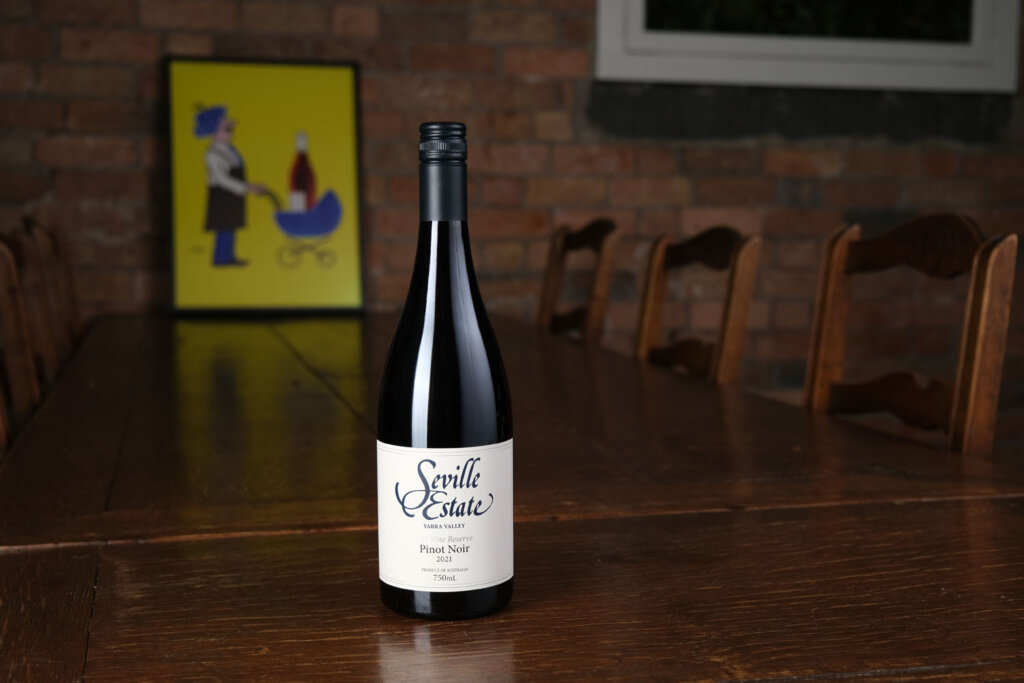
This was Howe’s wine of the day. “Pale, bright, fresh picked red fruits in the cherry, cranberry, rhubarb kinda area that accompanies lively, mouth-watering acidity – feels more Upper Yarra. Drive, energy, freshness, good length, tough to pick whether or not it’s more serious or fun. I like that it asks that question and makes me curious to keep tasting. Love these light, energetic pinots with cut and vibrancy. Good for a restaurant, with acid that asks for food.”

Dowling rated this as his number one wine from the tasting. “Beguiling nose, wild herbs, savoury tones and deli meats but at the same time red fruited!” he wrote. “Cherries both sour and sweet on the palate, grippy tannins but in a pleasing structure that is ably supported by some racy acidity. Lively long finish with power to burn. A crowd pleaser.”

Ryan had this one off top spot. “Bright red fruit, redcurrant, rhubarb, rose, seductive aromatics,” he wrote. “The palate has a delicacy of just-ripe red fruit, along with Campari and an almost sappy quality. The aromatics invite you back for more. It’s a very pretty wine with some restraint.”

Moret had this in second place for her wines of the day. “An autumnal vibe to it – pine mushrooms, truffles and pine needles make up the perfume. I felt like there was a really typical Yarra character to it… Great weight with tannins that will soften with age. An incredibly well-built wine that has the ability to age well. Glossy texture – an outstanding example of Yarra Valley pinot noir.”

Howe had this in second place for the day. “Lifted aromatics of red fruits in fresh picked cherry/cranberry range with potential rhubarb hints… High acid drives the energetic tone of the whole wine, and it is screaming for some food to cut through. Drinkability and likeability are at the high end on this. …There are some savoury funk notes, but don’t really care because with all that fruit and acid it will sit beautifully on a restaurant table and comfortably pair with anything from cooked oily fish to flamed white and red meat, of course fresh cheeses and charcuterie…”

This appeared on both Fagan and Dowling’s top-six lists. “Appealing, lifted dark cherry notes, together with perfumed violets give this wine nice poise,” wrote Fagan. “A textured wine with a fine line driving through the palate, giving length and precision. Nicely balanced from the perfume and lift on the nose right through to the lingering finish.” “Super-fragrant wine,” noted Dowling. “Rose and violets along with some green notes from whole bunch ferment. Gorgeous sour cherries and raspberries on the palate, some pomegranate too. Love the fine and tightly wound tannins. …Fine finish, pretty tight, will benefit with age and also sit well against some protein (thinking duck!).”

This completed Santolin’s top three. “An elegant yet expressive bouquet of morello cherries, wild strawberry and rhubarb. The palate is mouth filling and complete with some whole bunch Campari-like flavours coming through, followed by flavours of red berries, pomegranate and sweet oak. Time to stop what you are doing, grab this smashable wine and pair with a charcuterie board.”

This rounded out Nadeson’s top picks. “The wine presents with a deep, ruby-red hue that hints at age. On the nose, it offers a beguiling combination of ripe dark cherries, blackberries and a subtle earthy undertone, creating a complex and enticing bouquet. The palate is full but still finessed. Flavours of dark fruits, plums, touch of oak, spice and savory complexity. Firm yet well-integrated tannins provide structure, while a balanced acidity lends freshness.”

Howe placed this towards the middle of his top-six wines of the tasting. “This is fresh and vibrant with a silky mid-palate,” he wrote. “It is bright in both colour and feel. With a note of freshly picked red cherries, this is primary, pure and surprisingly long. It’s somewhere between serious and fun, and it really has some energy about it.”

Moret placed this just outside her top three. “For the lovers of the savoury spice of Burgundy, this is your wine,” she declared. “Steeped cherry liqueur, grainy tannins with a generous earthy finish. Sarsaparilla, orange peel, with great umami characteristics. Hedonistic. A powerful finish. The spice trail that Australian lovers of Burgundy have been looking for in our wines.”

This made the top-six lists of both Hirose and Santolin. “Framboise and bright red cherry,” wrote Hirose. “Carbonic nose with menthol-like cool characters. Red roses, Turkish delight. …It’s very pretty in style. Crunchy acid keeping the wine in shape. It will be very handy wine in the restaurant, as it hits every box for what most consumer expect from Yarra pinot. As long as the price is right, this wine will be the fastest moving item on the list.” “Loads of bright fruit on the nose – fragrant red cherry, raspberry, blood plum,” wrote Santolin. “A very elegant and delicate spice-infused palate… with cherry and rhubarb pushing through followed with some super-fine tannins.”

Hirose had this just outside his top three. “Baking spices and black pepper,” he wrote. “Blueberry compote, inky nose. Smoke and gunflint; ripeness is there but slightly reductive. Highly concentrated and very smoky palate. It might be too much for some, but I prize this kind of spicy, herbal nose, as long as there is enough substance to compensate. The powerful nose and palate call for something like smoky barbecue pork with cherry chutney.”

“Bright red cherry fruit. Intensely so,” wrote Fagan, giving this a top-six finish. “This wine shows the lovely intense pure Yarra red fruit so associated with the region. Amazing purity. Nice complement of wood spice there also, which gives more dimension aromatically and flavour-wise. Nice tannin and structure giving length, interest and drive.”

Ryan gave this a top-six berth. “Exuberant pretty red fruits, rhubarb, cranberry, just ripe strawberry,” he wrote. “The palate follows in a really red-fruited, overt bright fruit and floral style. It’s certainly delicious and really invites another glass. Served just cool, but not cold, this would be great on a hot day working from home.”

“Glorious nose – wild strawberries, redcurrants, cherries and raspberries,” wrote Dowling as he gave this a top-six finish. “This is a bit of a fruit bomb, but it works well; it’s generous and giving, hiding nothing. All the fruits on the nose are on the palate, too. Acid is pretty lively, which helps tone down the fruit, giving it some structure. Great length and overall finish.”

“Fans of aged pinot will love this,” noted Moret, adding this to her top selections. “The nose starts with bergamot, seagrass and a gorgeous umami note. The pretty cherry aspects have been balanced perfectly with the acidity and management of herbal aspects of the wine – they seem to have a maritime vibe to them. An extremely silky texture with prowess and finesse.”

“Some background wood spice notes balanced by some interest, possibly [whole] bunch-derived characters,” wrote Fagan as she placed this in her top six. “Hits the typical Yarra Valley red cherry mark also. Really interesting wine. Very fine line and drive on the palate. Finer boned in style – class and pure fruit expression.”
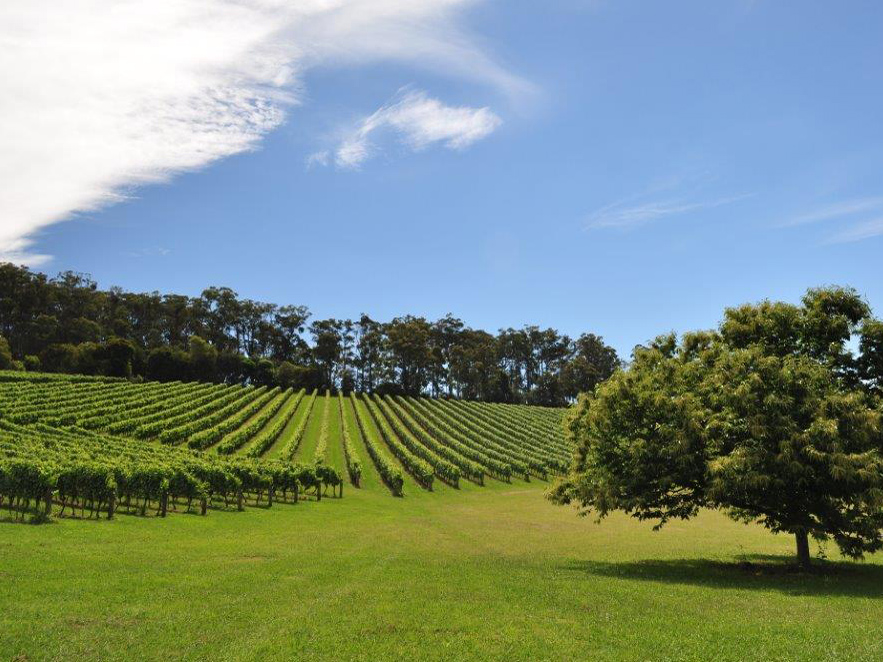
With a wealth of iconic names on its roster, the Yarra Valley is arguably Victoria’s marquee region. It has an aura of permanence, of deep history. In reality, while it was a pioneering region in the 1800s, it was sparsely planted – and bereft of vines for a time – for much of the 20th century, only seeing a glimmer of a renaissance from the late 60s, with some momentum in the 70s, but only really crystalising in the 80s and 90s.
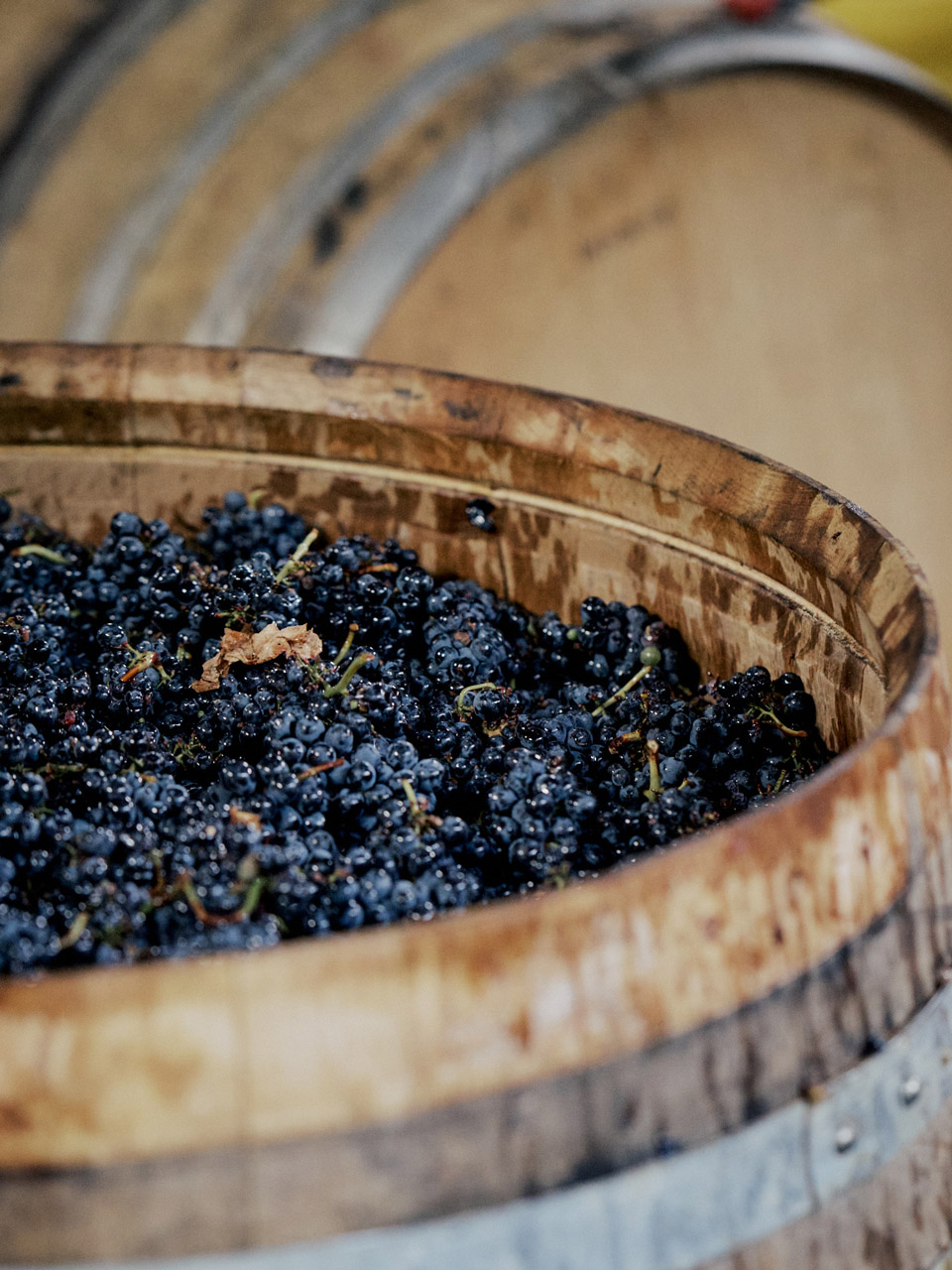
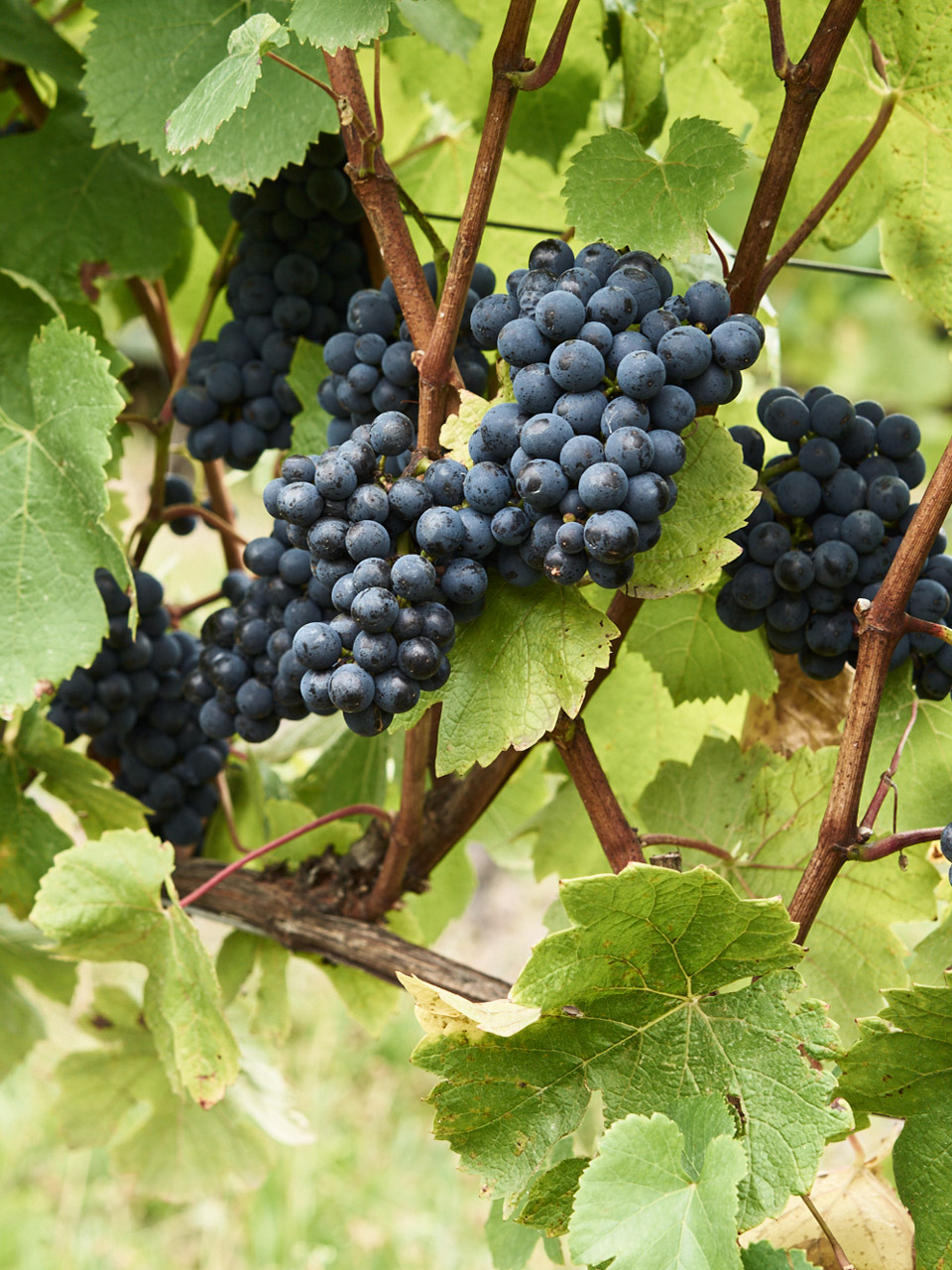
The first Yarra Valley vines were planted at Yering Station in 1838 by the Ryrie brothers, with many others following in their steps, including the establishment of Yering Farm, St Huberts and Yeringberg (with the de Pury family still working from the same winery, if from younger vines). The late 19th century was productive, and the wines received both local and international acclaim.
Decline followed, however, and the economic strain of WWI and the Great Depression saw commercial production halted in the 1920s and all recorded vines removed by 1937. The Yarra became grazing and farming land for the next couple of decades before Reg and Bertina Egan put a flag in the ground for its vinous renaissance when they first planted in 1963, establishing Wantirna Estate.
What followed is a roster of names that are going strong to this day, Mount Mary, Seville Estate, Yarra Yering… along with the rebirth of Yeringberg and St Huberts. The 80s saw James Halliday pursue his love for pinot noir and chardonnay, founding Coldstream Hills after his earlier foray in the Hunter Valley at Brokenwood. De Bortoli and Tarrawarra also hung out their shingles in the 80s, though the former rebranded the established Chateau Yarrinya.
Today, around 80 wineries represent the Yarra Valley, with the biggest growth in plantings coming in the ’90s. Chardonnay and pinot noir are now far and away the leading varieties, accounting for about 70 per cent of grapes harvested each year. Pinot also outstrips chardonnay somewhat, accounting for over 40 per cent of the region’s yield. That wasn’t always the way, with cabernet sauvignon – and attendant Bordeaux varieties – once being a prime mover.

Those Bordeaux varieties still contribute to some of the Yarra’s most fabled wines, but with cabernet sitting at 6 per cent, it is a relative footnote. The growth of pinot noir has ridden largely on the back of a thirst for still red wines, but many of the plantings, particularly in the cooler Upper Yarra, were originally intended for sparkling wine production, as they were seen as marginal in achieving ripeness.
Those sites are now seen as some of the best vineyards for premium pinot noir table wine. That’s due to a combination of factors, which includes advancing vine age and a warming climate, but it’s also because of experience of growing and making, along with changing tastes for more elegant wines.
“I personally love the pinots from the volcanic soils of the Upper Yarra,” says De Bortoli’s Steve Webber. “Pinot from the better sites in the Lower Yarra are plumper, darker fruited, still lovely aromatics, soft texture… The Upper Yarra is certainly more ethereal, slightly lighter in colour, but with lots of power and length.”
De Bortoli is based in Dixon’s Creek, but they also own the Lusatia Park vineyard in the Upper Yarra. “It’s important to note that there is not a lot of altitude difference between the Upper and Lower Yarra,” says Webber, noting the upper and lower designates refer to the flow of the Yarra, rather than elevation. “For example, Lusatia Park is at around 230 metres and some of our Dixons Creek vineyards are at 130–200 metres. The real differences are in rainfall and the cool air coming from the seas to the south.”


“I personally love the pinots from the volcanic soils of the Upper Yarra,” says De Bortoli’s Steve Webber. “Pinot from the better sites in the Lower Yarra are plumper, darker fruited, still lovely aromatics, soft texture… The Upper Yarra is certainly more ethereal, slightly lighter in colour, but with lots of power and length.”
Those weather patterns along with aspect and macroclimatic nuances create a lot of diversity outside the general upper and lower division. Additionally, varying soil types – which are broadly broken into low-nutrient grey soils and more fertile rich, red volcanic soils, but the underlying bedrock varies, with clay, siltstone, mudstone and small areas of granite all featuring – complex the matrix further.
Melanie Chester is Head of Winemaking and Viticulture at Giant Steps, farming six distinctly different Yarra vineyards. “An interesting comparison is Applejack and Primavera vineyards,” she says. “Same elevation at 300 metres but in Gladysdale and Woori Yallock [both Upper], and different soils, old grey clays and red basalts, respectively. The Applejack wines are savoury, umami, spicy with exotic red fruits and so much perfume. Primavera, the most sweet and succulent wines – pomegranate, rosehip, purple flowers, lighter, more lithe.”
Stylistic differences aside, the diversity is something that Mac Forbes, who farms three leased sites and has planted a fourth for his eponymous label, believes will help ride the waves of more turbulent seasons. “For a region I’d always criticised for being too complicated… too many soil types, aspects, elevations… etc., we now find ourselves incredibly well placed to cope with future weather fluctuations. Excitingly, we are seeing sites that previously have never been planted to vines now showing real promise if seasons get warmer and drier.”
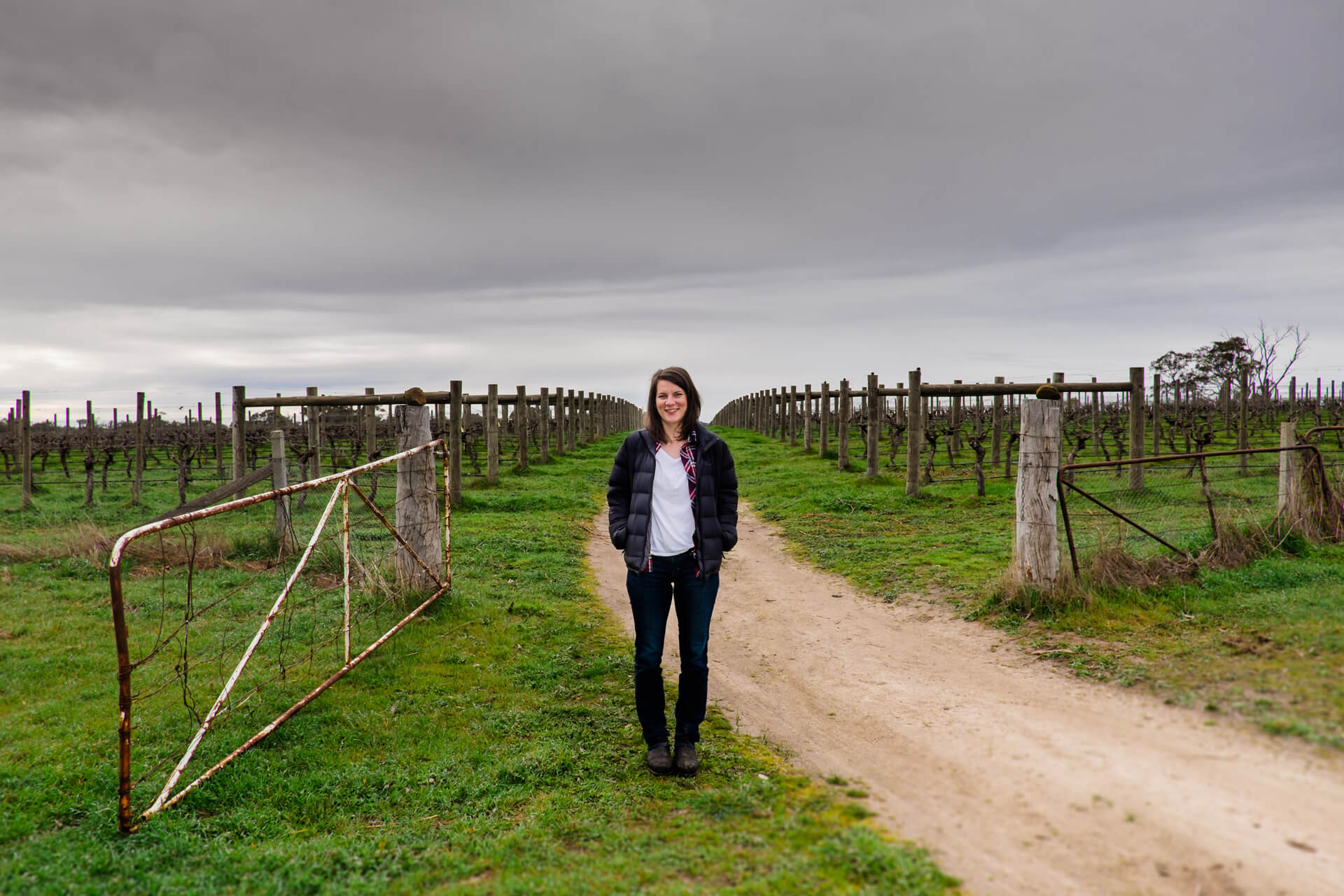
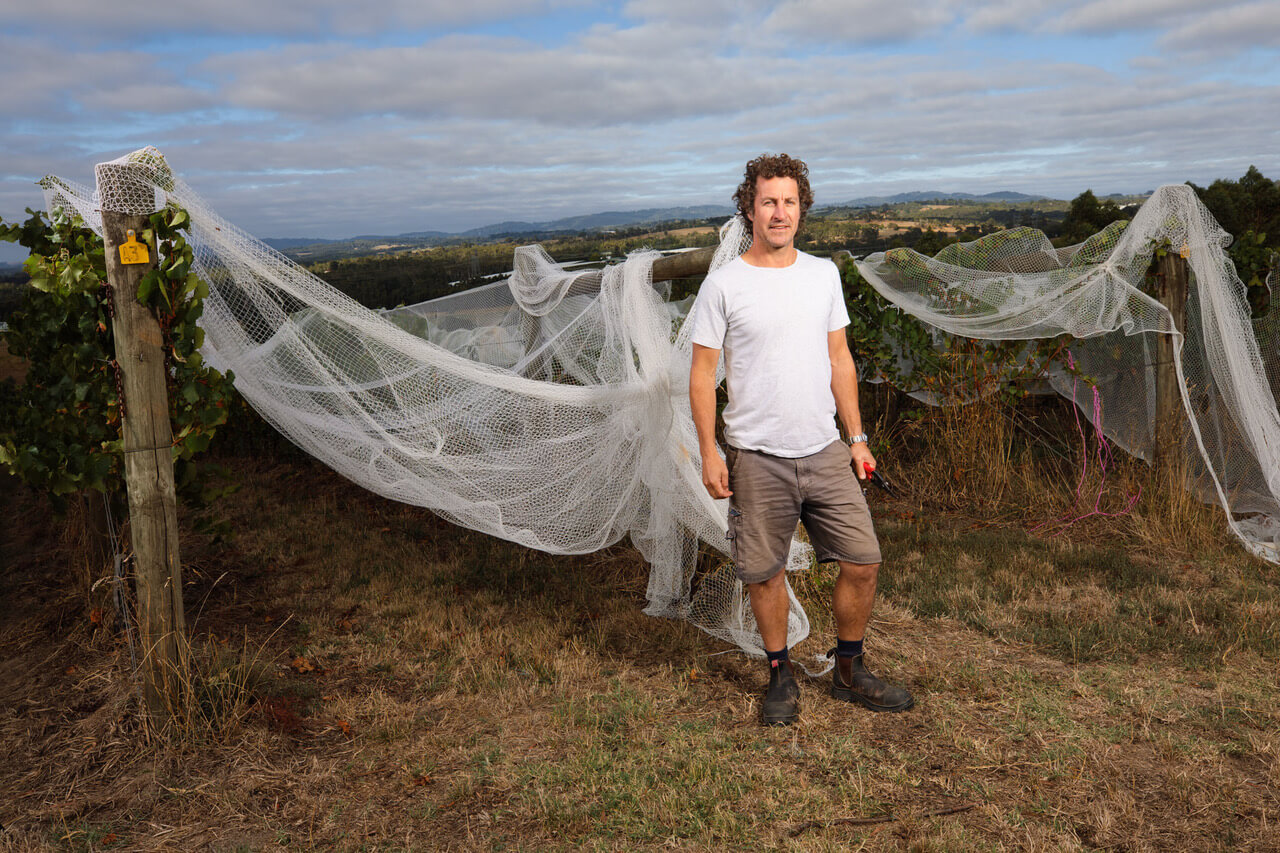
That coin flips the other way, too, says Webber. “For top-end pinot, I am sure that the profound wines will come from the best sites in the upper reaches of the Yarra River in most seasons. There are, however, some terrific pinot noirs from the lower reaches of the Yarra in the more moderate seasons.”
De Bortoli have removed some pinot noir in their warmer sites, betting on gamay among other varieties, but Webber notes that in other sites working with different vine material is yielding exciting results. “The newer clones – Abel, Pommard, 943, 667 – are giving brighter, more perfumed wines in both the Lower and Upper Yarra, but particularly in the Lower Yarra where MV6 can be a bit savoury on the warmer sites.”
That replanting is often done due to the threat of phylloxera (an American vine louse that kills vines), which poses a threat to all vines not on rootstock. “The pox is a blessing and a curse – but mainly a curse!” declares Chester. “The silver lining is that it does allow you to rethink your vineyards and make changes for the better. A lot of what we know now about growing great pinot is different to the late ’80s and ’90s when much of the Yarra Valley was planted.”
When the Yarra was first experimenting with pinot noir, there simply wasn’t much of a history of the variety in this country. The regions we now recognise as leaders for the grape – Mornington, Macedon, Tasmania, Geelong, Adelaide Hills etc. – are essentially modern winegrowing regions. It has taken time for the grape to be properly understood, both in the vineyard and the winery.
“An interesting comparison is Applejack and Primavera vineyards. Same elevation at 300 metres but in Gladysdale and Woori Yallock [both Upper], and different soils, old grey clays and red basalts, respectively. The Applejack wines are savoury, umami, spicy with exotic red fruits and so much perfume. Primavera, the most sweet and succulent wines – pomegranate, rosehip, purple flowers, lighter, more lithe.”
“No doubt, the cost of phylloxera will be felt for generations,” says Forbes. “However, with the knowledge that we have built over the decades, we can go about planting or replanting with greater sensitivity towards our duty to the land, as well as choice of …density, clones, farming practices and even location that can set up the Yarra to continue to produce fine-boned, fresh, medium-bodied wines. It comes down to us now… we have a region that can deliver so much. We just need to do the work.”
That is a long and ongoing project, with the need to balance having enough productive vines while new plantings mature. So, the results of that cumulative knowledge will take time to bear fruit, but Webber believes that what’s in the glass already displays that experience amply.
“I think the Yarra has developed quite a unique style of pinot noir: fragrant, light to medium in weight, with texture, length and purity,” says Webber. “I think we are now making as good top-end pinots as we are top-end chardonnay in the Yarra… I would not have said that three years ago. As basic Burgundy becomes unrealistically expensive, the Yarra surely is in a pretty good place for global sales of premium pinot.”

Our panel: Dr Ray Nadeson, owner and winemaker Lethbridge Estate; Chris Ryan DipWSET, senior buyer Trader House restaurants; Sarah Fagan, winemaker Tarrawarra Estate; Abbey Moret DipWSET, owner Atlas Vinifera; Patrick Dowling, On-Premise National Sales Manager for Domaine Wine Shippers; Yuki Hirose MS, head sommelier LUCAS Restaurants; Travis Howe, owner and head of FOH and Beverage Carlton Wine Room. Adrian Santolin, owner/winemaker Santolin, chief winemaker at Rob Dolan Wines. All wines were tasted blind.
“There was lots of red fruit and some darker characters in there, but primarily what jumped out for me was the brightness of the fruit.”
“I thought they were pretty good, and they spoke of the Yarra a lot,” said Fagan, opening the discussion. “There was lots of red fruit and some darker characters in there, but primarily what jumped out for me was the brightness of the fruit, and the balance between tannin, acid and oak. Overall, I didn’t find too many wines were too oaky.”
“Undoubtedly Yarra,” agreed Santolin. “There’s a sappiness that is unmistakable. And I think the good wines sort of kept that to… while it’s a characteristic, they keep that to a minimum. As Sarah said, the handling of oak, I think in most of the wines, was pretty good. …Personally, I don’t mind a little bit of oak, as long as it’s playing a nice structure. It’s adding to the palate weight. It just gives it some length as well, along with the acid.”
“There are some pretty smart wines there,” added Dowling. “As much as some of the oak did stand out, I thought it was pretty good. In decades gone by, we’d probably have seen a lot more oak in those wines.”
“I think with some of the wines, the acid was a bit pokey and probably a bit sharp,” said Fagan, noting that the last few vintages have been unusually cool. “…And probably from the upper reaches. Just a little sour on a few of the edges, but I think it definitely looked like a bracket of Yarra wine. They were bright. They all carried that red cherry backbone.”
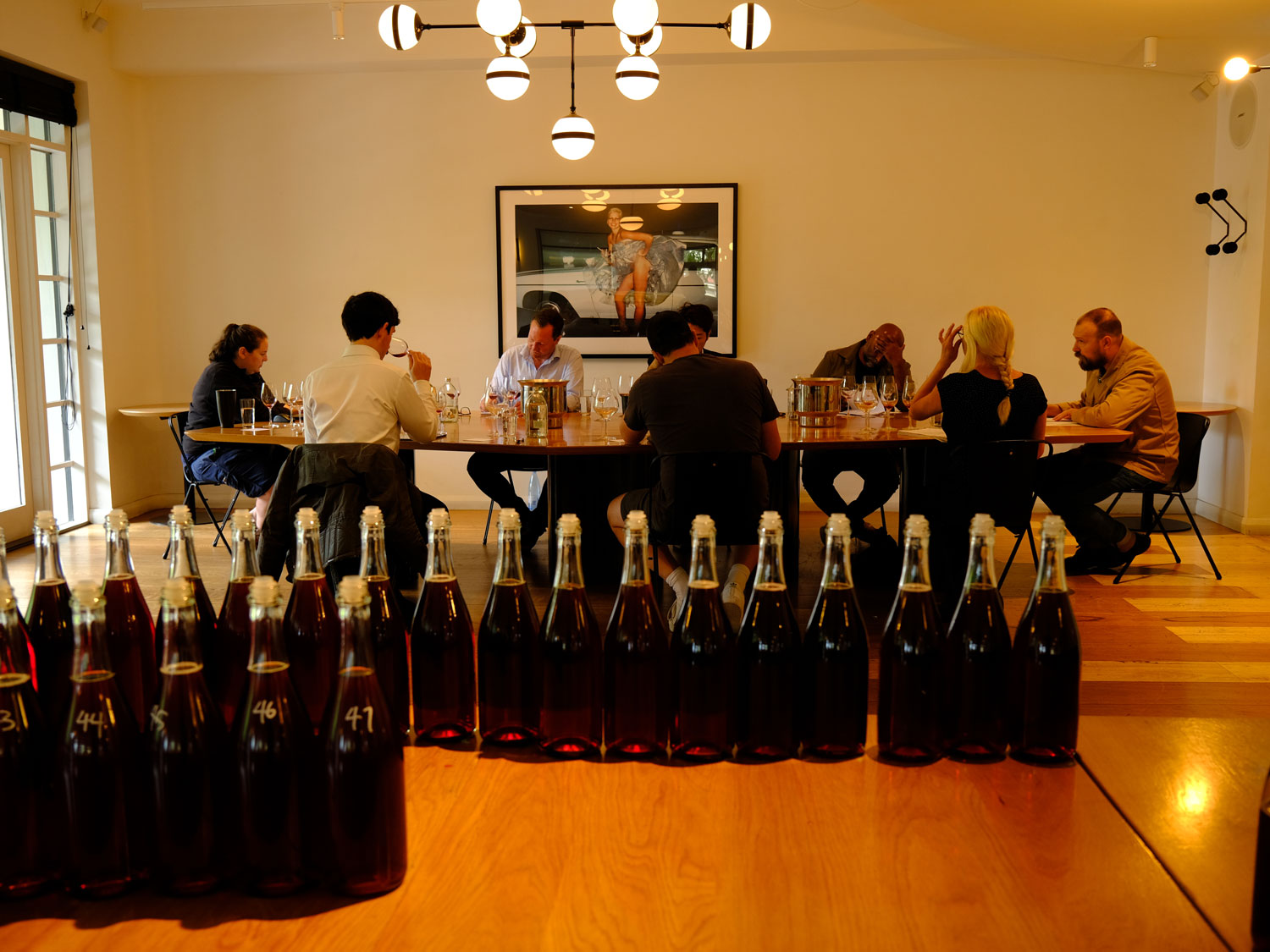
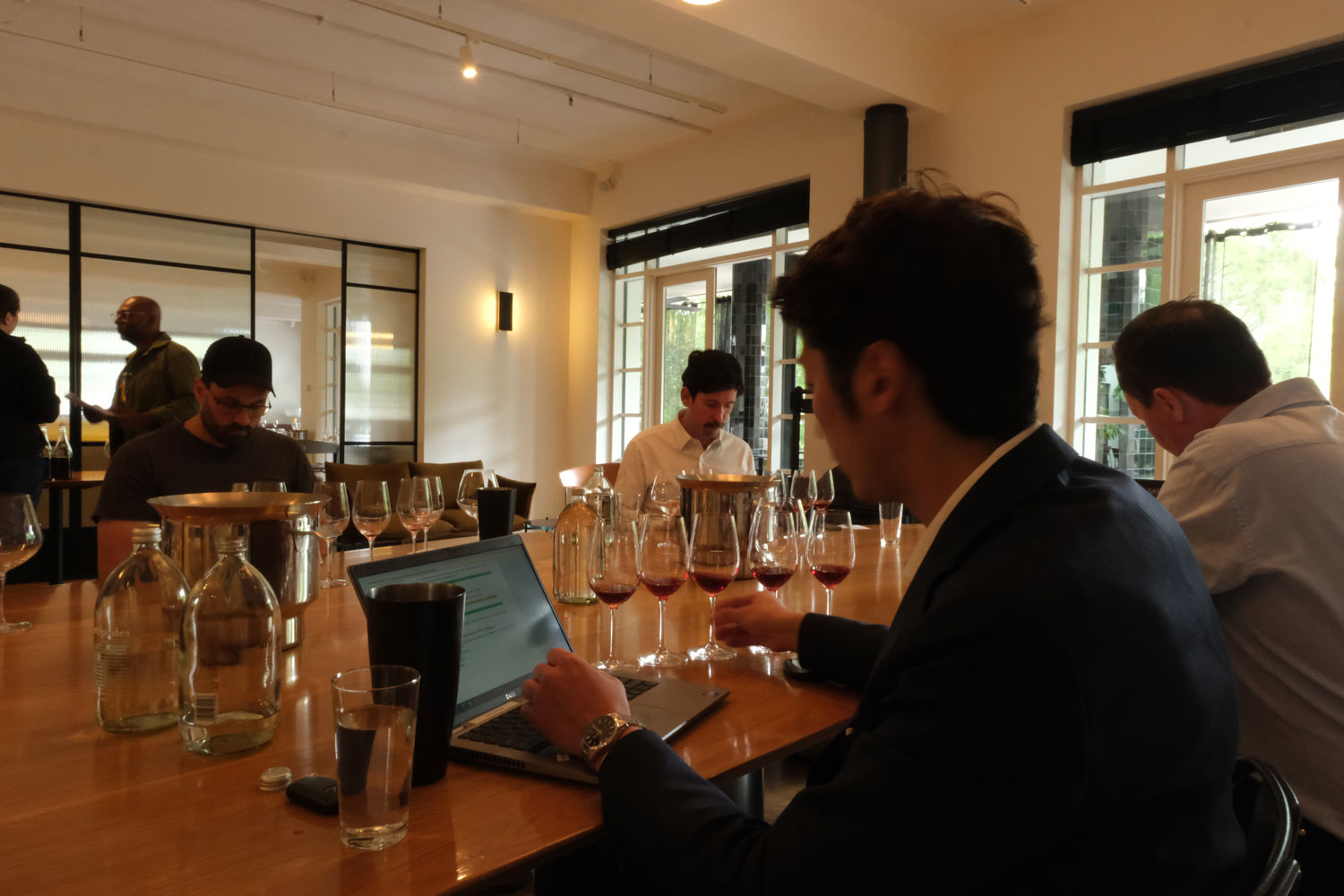
“They all carried that red cherry kind of backbone.”
“It was probably a challenging bunch of wines to taste because of the vintages,” noted Santolin. “We’ve had those cooler vintages, so you’ve got probably higher natural acidity compared to most other years. The wines are young, so the tannins are still there, and that tannin-acid mix can be a little bit challenging for some. But within that, you can find wines that have that ability to age and will have that lovely longevity.”
“The wines that I enjoyed carried texture, bright red fruit, nice kind of tannin,” added Fagan. “I think that’s something positive in pinot – there can be too much softness. But yeah, just finding that balance where it all kind of married together and wasn’t too angular or green or aggressive. …I think the [whole] bunchy characteristics were well handled for the seasons. I didn’t see too many really stemmy wines.”
“I was surprised how there weren’t too many proper bunchy wines,” agreed Ryan. “There was whole bunch applied, but not super edgy. …And I really like the acidity. I like that sappy edginess. I kind of find that refreshing. I think in good, cool vintages, they have a sort of restraint and a prettiness.”
“I think the better wines had purity of fruit, lovely red fruit coming through, sour cherry, more elegant styles in a raspberry spectrum… pomegranate,” added Santolin. “But there was a little bit more, probably with some of these… there was a lot more in that, I wouldn’t say herbaceous, but we’re sort of going down that rhubarb, bouquet garni, garigue style.”

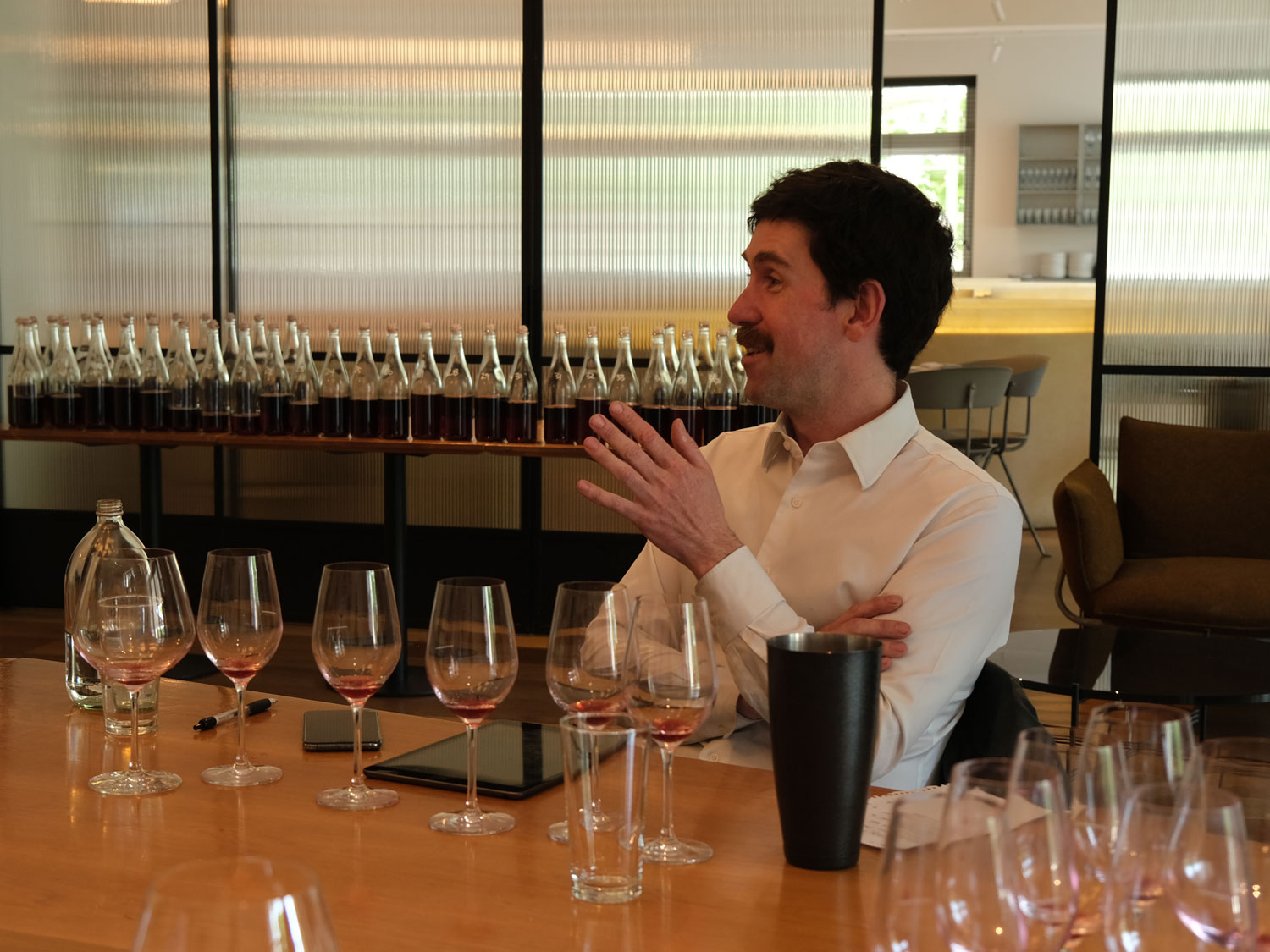
“I love cool vintages, because it just leaves so much open to future improvement, plus also food,” said Dowling.
“The wines that I liked were actually all over the place,” said Moret. “There was one that was older, and it had tannins seamlessly integrating into itself. And I thought that was beautiful. There were ones that were youthful and would grow into an adult. And then there were ones that just looked like things that punters will love. Just delicious. And honestly, it’s not complicated. …You drink a glass of that wine and it’s something everybody loves. There’s a lot of the juicy fruit, the red fruit… It’s really beautiful to see the spectrum.”
“I can taste a lot of pinot, and as I do, you taste it, you taste it,” added Nadeson. “And you go, yeah, yeah, good, good, good. It’s all doing the right thing for me. And then all of a sudden, you hit one and you go, that’s it. That’s cool. All of a sudden, that’s cool. And I’ve got a few of those today. And if you’ve got a few out of 50, or whatever we did, that’s enough. …You get a handful and you’ve done all right.”
“Maybe I was looking through a slightly different lens,” chimed in Howe. “I was writing the word correct, which is one of my favourite things that I picked up a long time ago. It’s like, yeah, this is correct. And I found a lot of correct wines. …But in a restaurant capacity, the wines that are just a little bit edgy stand out. Maybe it’s a little bit green, maybe it’s a little bit hard, maybe those tannins just stand out a little bit too much… That imbalance leaves room in the capacity of the restaurant. The imbalance of the wine allows the space for the food to marry, or the imbalance of the dish allows room for the wine to come in.”
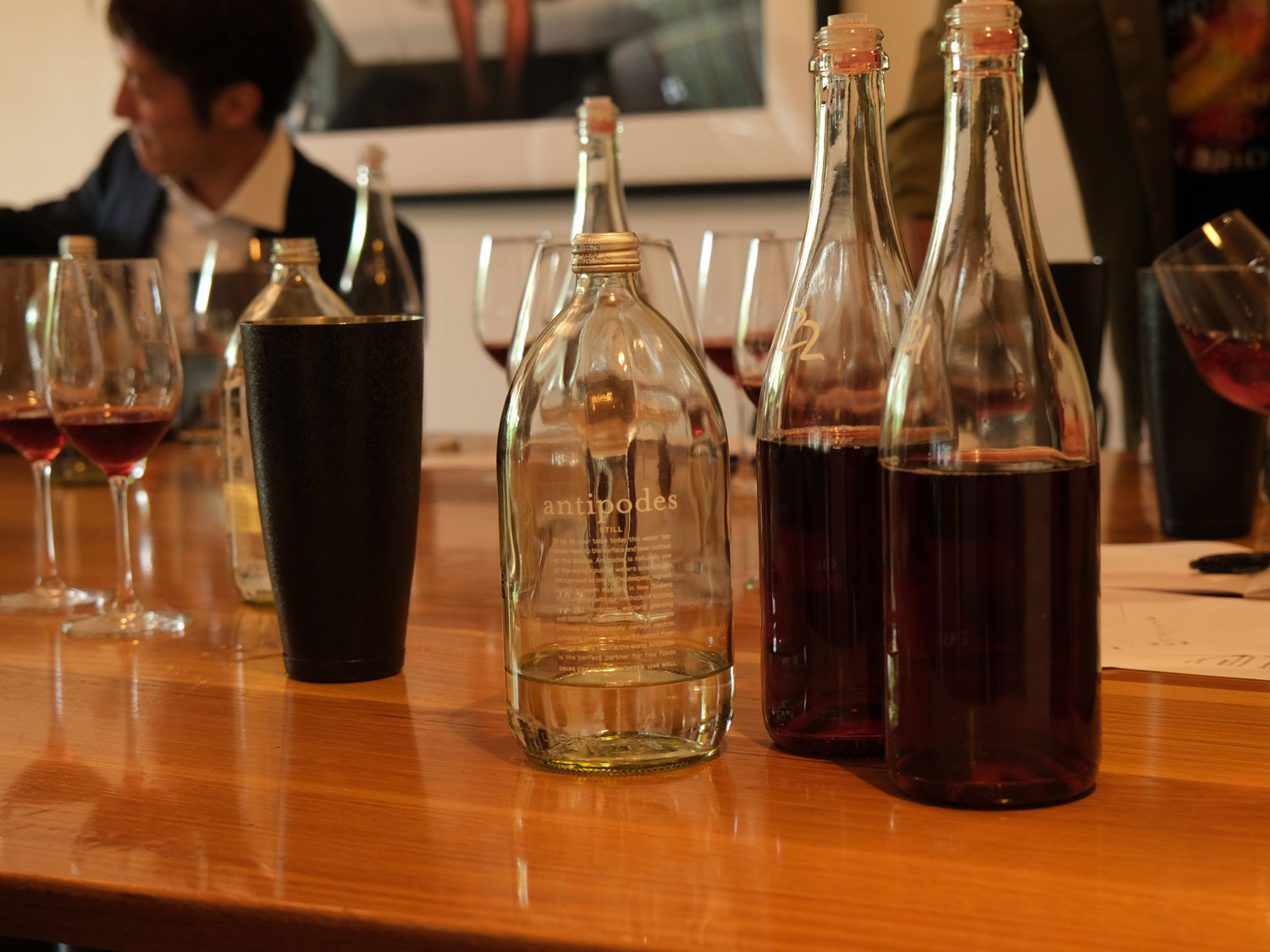
“There were ones that just looked like things that punters will love. Just delicious. And honestly, it’s not complicated. …You drink a glass of that wine and it’s something everybody loves. There’s a lot of the juicy fruit, the red fruit… It’s really beautiful to see the spectrum.”
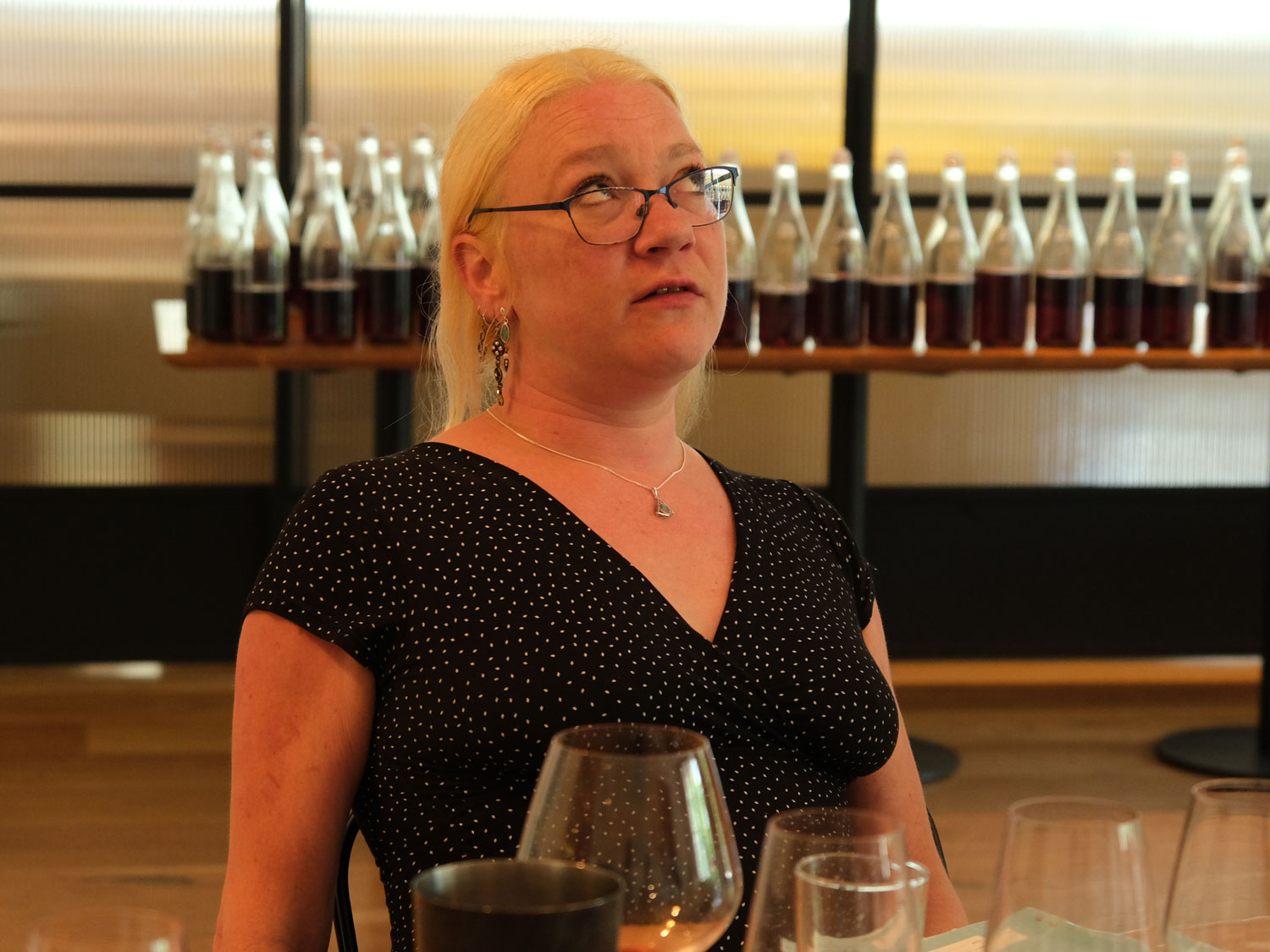

“There were so many correct wines,” agreed Ryan. “It was probably the curse in a way, because they’re so delicious. Arguably, possibly too simple in a way. I like the restraint, the prettiness… But how do you find detail and interest in otherwise correct wines? That was probably the challenge. So, the ones that stood out had a few more layers… Deliciousness was a standard. But how do you make compelling, interesting wines was probably more the challenge.”
“How often do you drink a perfectly balanced sherry, but with the right food it’s good,” added Howe. “…So, I tend to favour the wines that are a little bit more of a standout, which I prefer in the context of food. I find the context of the experience, the pace at which it’s drunk, the time at which it’s held, and the food on the table are the context that I think of. So, there was a lot of wine that I thought, yeah, very, very good wine. If it was a scoring capacity, high score. Would I buy it, use it? Think it’s good for my context? Probably not. But would it also win medals and sell heaps? Yeah.”
“Just to follow up with what Travis said,” added Hirose. “I can tell you which wine that I enjoyed the most. But also, I can totally see the guests or the restaurant I work for knocking back the bottle because they see too much of this, this and this. But I enjoyed it. So, without knowing price, without knowing vintage or whatever, it’s my cup of tea. But is it usable for the restaurant? It’s a different perspective.
“I’m impressed with the quality and consistency of the wines. …I chose six wines, but it’s pretty much me, my palette. …So, my choice is quite different than others, I’m sure. …And I totally agree with Travis. It’s got me thinking…”
“We’re a baby when it comes to producing Pinot,” concluded Moret. “The vintages are never the same. The vineyards certainly aren’t the same. We’re only coming to terms with the difference now. But we’re doing all right. And I’m pretty impressed.”


Sarah Fagan took on the role of winemaker for Yarra Valley icon Tarrawarra Estate in mid 2023 after two decades at another Yarra star: De Bortoli. Fagan was the winemaker for De Bortoli Wines’ Yarra Valley operation, working alongside Steve Webber and overseeing all the production. She has also managed to work several vintages for legendary Californian vigneron Ted Lemon. Fagan was a Len Evans scholar in 2008, and the Gourmet Traveller WINE Young Winemaker of the Year for 2009.
Yuki Hirose MS fell for wine while working in bars in his native Tokyo. Moving to Sydney over 15 years ago, he honed his sommelier skills over a decade at Rockpool, while also working his way through the ranks of the Court of Master Sommeliers with the aim of achieving the highest distinction. Hirose moved to Melbourne during the pandemic to launch a world class wine program with Loic Avril for a string of ambitious venues for LUCAS Restaurants. Today, as Wine Operations Manager, he oversees the lists and sommelier teams at Society, Kisume and Grill Americano. In August 2023, after five previous attempts, Hirose became a Master Sommelier, one of less than 300 worldwide.
Travis Howe has worked as a sommelier for nearly two decades. After three years in the heyday of Taxi Dining Room, he launched Coda with the Bartholomew family in 2009. When they opened Tonka in 2013, Howe ran the wine lists, sommelier teams and education programs across both venues. In 2018, he left to start his own venture alongside Andy Joy when they revamped the Carlton Wine Room, turning it into one of Melbourne’s most beloved wine bars/restuarants..
Abby Moret has been working in the retail wine industry since she was 18, including working in London for Majestic Wine, gaining her WSET Level 3 Certificate while there. She was the Promotional Manager of Vintage Cellars, before moving into buying and product development for the national chains. After gaining her WSET Diploma, Abby founded Atlas Vinifera in 2017, an independent, boutique wine bar and wine store in Richmond that specialises in small-batch, interesting, hand-crafted and cult wines from all over the world.
Dr Ray Nadeson is the winemaker and owner of Lethbridge Wines. During a career researching and teaching neuroscience at Monash University, Nadeson founded Lethbridge Estate with his partner Maree Collis. He also managed to squeeze in a winemaking degree in his spare time. Since 2003, Nadeson has been focused solely on the estate, farming with biodynamic principles and making wine from home vines, select local vineyards and as far afield as Heathcote, the Pyrenees, Henty and McLaren Vale.
Chris Ryan is a senior wine buyer with Trader House restaurants, which encompasses Andrew McConnell’s suite of venues, including Gimlet, Cutler & Co., Supernormal and Marion. Ryan holds diplomas from WSET and the Association de la Sommellerie Internationale, is a French Wine Scholar and also Court of Master Sommeliers certified. He was crowned the Best Sommelier of Australia in 2021. Ryan also makes wine in the Yarra Valley under his Honky Chateau label.
Adrian Santolin has been making wine with his wife, Rebecca, under their eponymous label since 2012, while he is also the chief winemaker at Rob Dolan Wines. He has worked in Italy, both in Franciacorta in Lombardy and in the Veneto, which is where his grandparents emigrated from in the 1930s. It was on their property in Griffith that he first started working in vineyards. Santolin has also worked extensively in the Yarra Valley, as well as in Sunbury and the Hunter Valley.
Patrick Dowling has had a successful career in the wine industry at state, national and international level, incorporating selling, sales team management, marketing, brand management, distributor management, vintage work, judging and ambassadorial work. Dowling has a wine marketing degree from Adelaide University, has managed a portfolio of brands for the Joval Wine Group, and been an ambassador for Penfolds in South-East Asia, the Middle East and Africa. He is currently the On-Premise National Sales Manager for Domaine Wine Shippers.
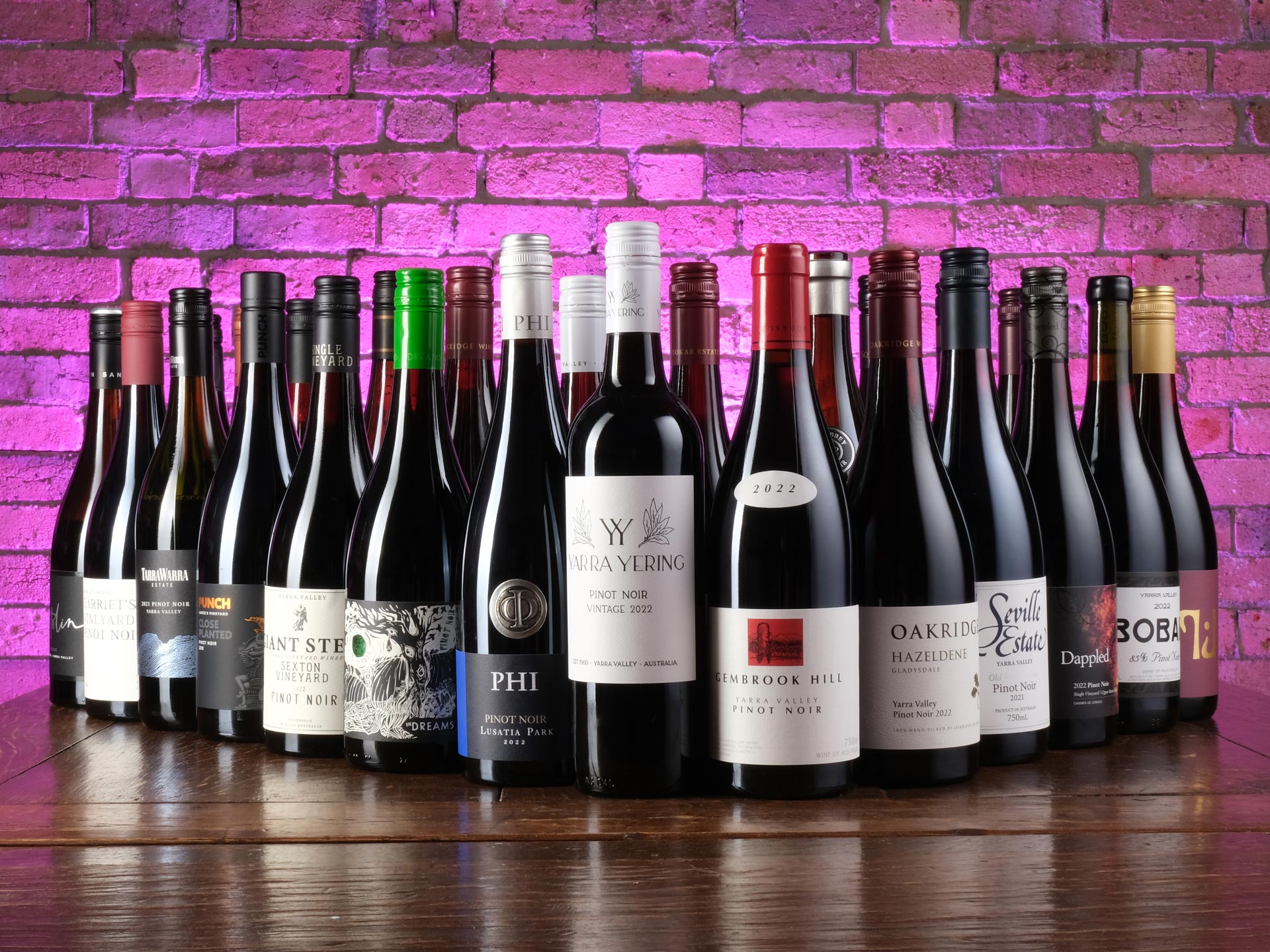
Please sign in or create account as candidate to bookmark this job
Please sign in or create account to save this search

Please sign in or create account as candidate to create a resume